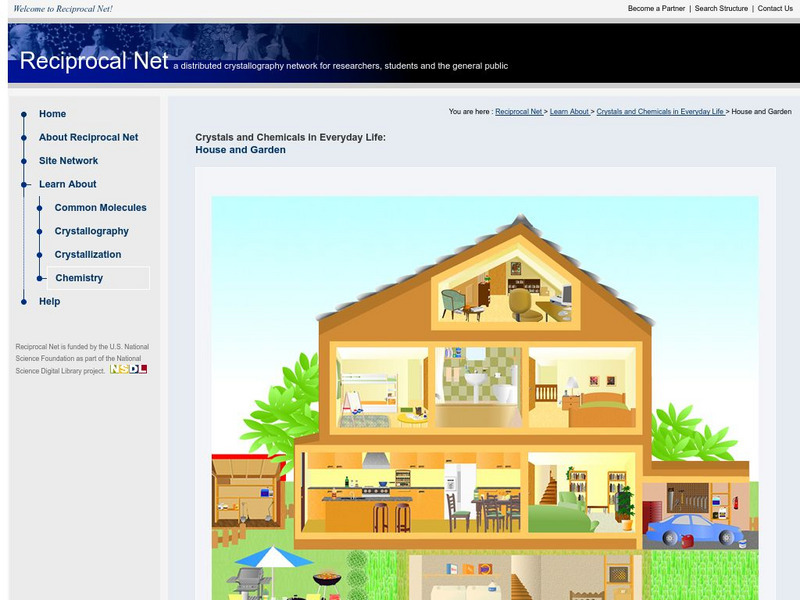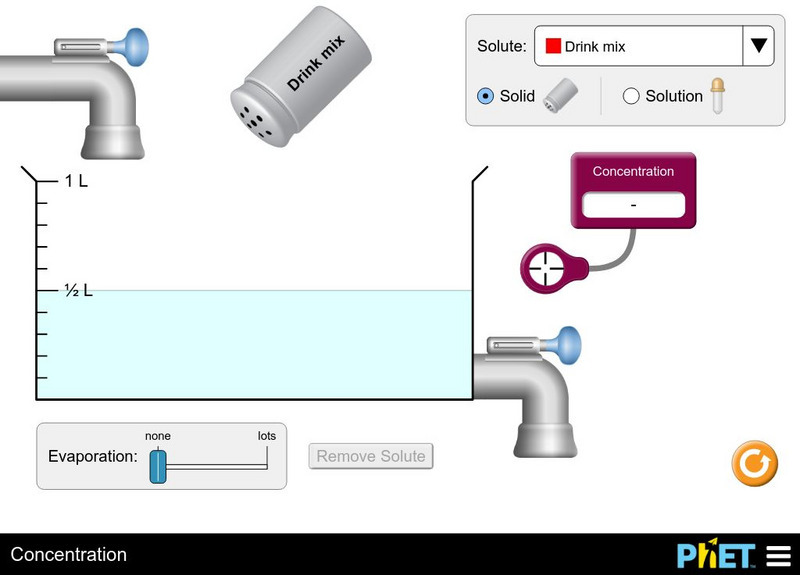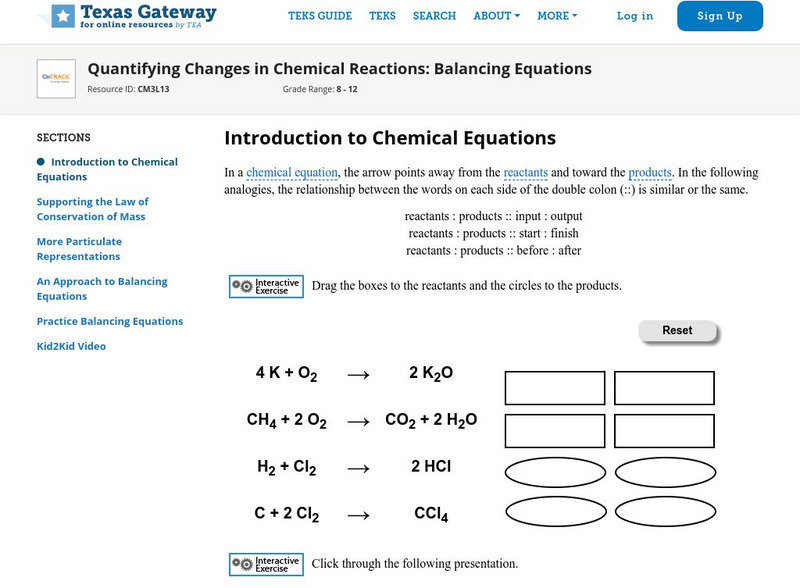Concord Consortium
Concord Consortium: Molecular Workbench Showcase: Chemistry, Reactions
Simulations that can help students visualize and understand concepts in chemistry like the collision theory, chemical reaction equilibrium, and polymerization.
Other
Widener University: Balancing Chemical Reactions
Practice your balancing chemical equations skills with this interactive exercise. Students are given equations that need to be balanced. Tutorial gives immediate feedback by telling the students they are correct or incorrect. After...
Soft Schools
Soft Schools: Quizzes: Endothermic and Exothermic Chemical Reactions
Assess your ability to distinguish between exothermic and endothermic chemical reactions with this interactive multiple choice quiz. Receive immediate feedback to your answers.
PBS
Pbs: The Great War: Interactive Timeline
This site has an interactive timeline of World War I. Choose a year to see important events listed chronologically. You can click on battles and names of famous people to read accompanying thoughts of historians.
University of Utah
University of Utah: Learn Genetics: Mouse Party
Using an interactive demonstration, this educational site provides a glimpse into how illicit drugs disrupt the synapse through unique molecular mechanisms causing the drug user to feel 'high'.
Other
Reciprocal Net: Crystals and Chemicals in Everyday Life
In this interactive students will understand crystals and chemicals in everyday life. The animation takes you through a household and explains various crystallogrophy we use all the time. Objects include light bulbs, items in a bathroom...
Chiral Publishing
Chiral Publishing: An Introduction to Chemistry: Compounds and Chemical Bonds: Audio Book
Did you ever wonder how or why atoms bond together? This interactive tutorial sheds some light on why bonds form and the difference between ionic and covalent bonds.
Other
Lenntech: Multilingual Periodic Table
An interactive periodic table of elements. Click an element to view a detailed description. Click the flags at the top to choose your language: English, French, Spanish, Dutch, and German.
Khan Academy
Khan Academy: Test Prep: Mcat: Chemical Processes: Covalent Bonds: Intramolecular and Intermolecular Forces
Explains what intramolecular and intermolecular forces are and the different types for each. Includes lots of examples.
TeachEngineering
Teach Engineering: Surfactants: Helping Molecules Get Along
Students learn about the basics of molecules and how they interact with each other. They learn about the idea of polar and non-polar molecules and how they act with other fluids and surfaces. Students acquire a conceptual understanding...
Texas Education Agency
Texas Gateway: Ionic and Covalent Bonding
In this tutorial, students learn about ionic and covalent bonds and predict which elements will form which type of bond. Includes interactive exercises as well as videos.
University of Colorado
University of Colorado: Ph Et Interactive Simulations: Concentration
Watch your solution change color as you mix chemicals with water. Then check molarity with the concentration meter. What are all the ways you can change the concentration of your solution? Switch solutes to compare different chemicals...
University of Colorado
University of Colorado: Ph Et Interactive Simulations: Molarity
What determines the concentration of a solution? Learn about the relationships between moles, liters, and molarity by adjusting the amount of solute and solution volume. Change solutes to compare different chemical compounds in water.
University of Colorado
University of Colorado: Ph Et Interactive Simulations: Molarity
What determines the concentration of a solution? Learn about the relationships between moles, liters, and molarity by adjusting the amount of solute and solution volume. Change solutes to compare different chemical compounds in water.
Math Science Nucleus
I. Science Ma Te: Integrating Science, Math and Technology
This site offers a wealth of online textbook-related materials that encourage the discovery of science in the world around us. Enter the site to access material on specific topics. Each section contains reading material (complete with...
Science Struck
Science Struck: Examples of Chemistry in Everyday Life
Gives examples of chemical interactions occurring in the human body, in the world around us, in foods, and in products we use.
CK-12 Foundation
Ck 12: Physical Science for Middle School
This digital textbook covers core physical science concepts and includes interactive features, real world examples, and videos.
University of Arizona
University of Arizona: The Biology Project: Chemicals and Human Health
The University of Arizona's Biology Project provides background information on toxic materials and the body's responses as well as interactive tutorials with assessment questions and an activity in which students can actually acquire and...
Texas Education Agency
Texas Gateway: Balancing Equations
Learn how to balance equations in this tutorial. Tutorial includes videos, interactive activities, and practices.
University of Alberta
The University of Alberta: Infrared Spectroscopy
Complete this interactive tutorial and learn about interpreting the infrared spectrum ("I" "R") that provides information about the functional groups in a molecule. Included are 12 labs and a quiz.
Other
Science Alive: What Is Synthesis?
This lesson describes chemical synthesis in terms of building or breaking down molecules and discusses the value of chemical synthesis. Students will have a chance to play an interactive game that is analogous to the process of chemical...
CK-12 Foundation
Ck 12: Chemistry Simulation: Camping Chemical and Physical Changes
[Free Registration/Login Required] Explore how heat and temperature relate to phase changes.
Alabama Learning Exchange
Alex: Name That Change!
This lesson teaches students to distinguish between physical and chemical changes. Students will view an interactive slideshow presentation and then conduct experiments to discern physical and chemical changes.
Chem4kids
Chem4 Kids: Periodic Table and the Elements
Students can use this resource to interact with the periodic table. Information is available for each element. This is a good source of information for younger students.


















